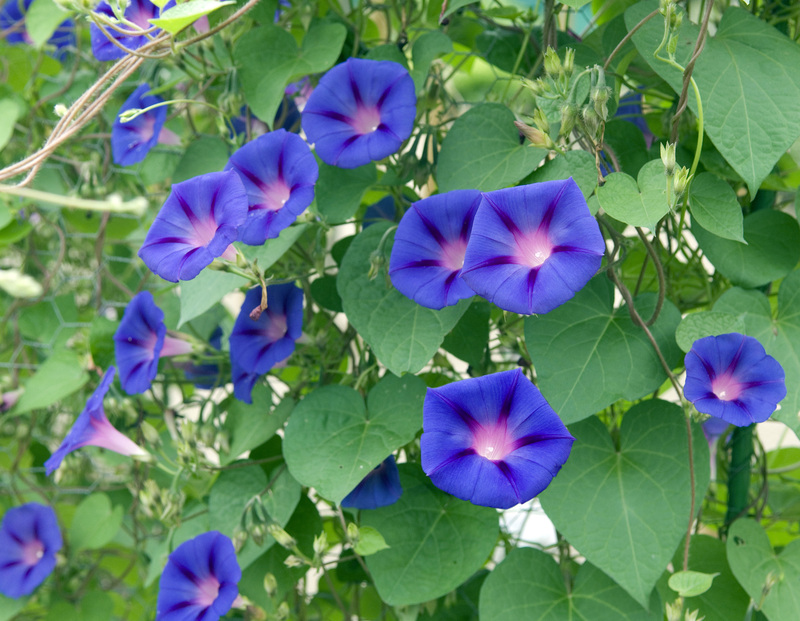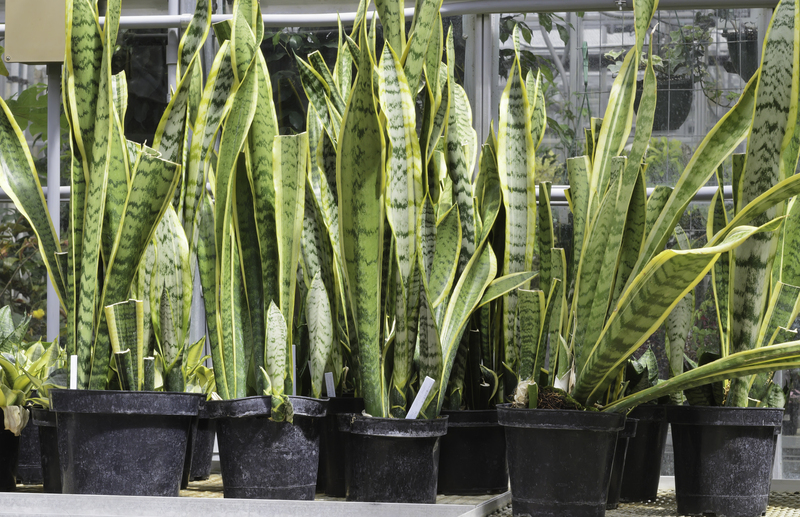Balancing Canine Play and Plant Growth
Posted on 26/06/2025
Balancing Canine Play and Plant Growth: Creating Harmony in Your Garden
Our beloved canine companions bring joy, energy, and life to our homes and gardens. But for plant lovers, the exuberant antics of a dog can sometimes mean trampled flowers and chewed leaves. Is it truly possible to achieve a thriving, dog-friendly garden where both canine play and plant growth flourish? Absolutely!
This comprehensive article will explore practical and creative ways to balance dog activity with plant care, ensuring that your outdoor space caters to the needs of both pup and plants. We'll tackle garden design, canine-proofing methods, plant selection, and training strategies for harmonious coexistence.
Why Combining Dogs and Flourishing Plants is a Challenge
Dogs are naturally curious and love to explore, dig, chase, and sometimes nibble. Their playful paws and energetic nature, while delightful, can take a toll on delicate vegetation. Common issues include:
- Flattened flower beds from frequent running or digging
- Uprooted plants due to digging or playing fetch
- Chewed leaves and stems, especially puppy chewing phases
- Urine spots causing dead patches on grass and soil imbalance
- Broken plant supports from excited chases
- Exposure to toxic plants for dogs
Yet, a garden need not be an either/or proposition. With informed choices and a few design edits, your pet and plants can thrive together. Let's explore how.

Garden Planning for Dog Owners: Laying the Foundation
Successful garden planning for those with dogs involves accounting for canine behaviors while still prioritizing lush plant growth. Here are the foundational steps to achieving the right balance:
1. Observe and Understand Your Dog's Habits
- Identify pathways and favorite areas: Dogs naturally patrol perimeters and forge "dog paths." Watch your pet over several days to pinpoint these trails.
- Recognize their play style: Is your dog a digger, an explorer, a sprinter, or a lounger? Customizing your landscape starts with knowing their tendencies.
2. Design With Zones in Mind
- Active Play Zones: Dedicate open, grassy stretches for running and fetch. Strong turf grass is ideal here.
- Dog Paths: Rather than fighting habitual paths, formalize them using mulch, pavers, or gravel that's gentle on paws.
- Plant Refuge Zones: Limit canine access to delicate beds with borders or fencing, giving your plants a safe haven.
- Shady Rest Areas: Incorporate shaded spots for cooling off after play, using dog-safe mulch and sturdy, non-toxic plants.
3. Choose Dog-Friendly, Hardy Plants
Select robust varieties that can withstand a bit of roughhousing. Some recommended options include:
- Ornamental grasses: Feather Reed Grass, Fountain Grass, Blue Fescue
- Woody shrubs: Boxwood, Spirea, Viburnum
- Ground covers: Corsican mint, Clover, Creeping thyme
- Sturdy perennials: Daylily, Coneflower, Salvia
Be sure to avoid toxic plants such as foxglove, sago palm, lilies, and azalea, which can pose serious risks to dogs.
Protecting Plant Health Amid Canine Activity
Plant growth depends on healthy soil, moisture, and freedom from disturbances like constant trampling. Below are proven strategies for keeping both your plants and your playful pet healthy:
1. Strategic Barriers and Fencing
- Low decorative fencing or garden edging can physically separate prized flowerbeds.
- Raised garden beds offer protection from digging paws.
- Temporary wire cloches keep vulnerable new plantings safe until established.
2. Create Appealing Alternatives
- Designate a digging pit with soft, loose soil or sand to channel digging urges constructively.
- Toy stations or agility equipment attract your dog's attention away from delicate plants.
- Water features like splash pools cool your pup and may reduce trampling of vegetation seeking relief from heat.
3. Use Dog-Safe Mulches and Hardscapes
- Cedar and pine bark mulch are safe and comfortable, discouraging digging in unwanted areas.
- Avoid cocoa mulch, which is toxic to dogs.
- Light-colored pavers reflect heat and are gentle on paws, serving as excellent paths along high-traffic zones.
4. Plant Protection During Establishment
Even tough plants need time to root securely. Use small temporary enclosures or keep dogs out of new beds for several weeks to ensure healthy plant growth.
Training Tips for Harmonizing Dogs and Gardens
Successful balancing of canine play and plant growth goes beyond garden design--it also relies on consistent training. Teach your pup what's allowed and what's off-limits for lasting success.
1. Consistency is Key
- Use positive reinforcement--treats, praise, or play--in your training regime.
- Redirect undesirable behaviors such as digging or trampling to designated areas.
- Be patient. Repetition ensures your dog learns garden boundaries.
2. Mark Boundaries Clearly
Garden fencing, raised beds, and decorative edging make it easier for dogs to distinguish their play areas from plant zones.
3. Discourage Chewing and Digging in Beds
- Supervise garden time with young dogs and intervene calmly if rules are ignored.
- Apply pet-safe deterrent sprays to targeted plants if chewing persists.
- Reward your dog for playing in "approved" spots, such as dog-designated digging beds.
Best Practices: Maintaining Plant and Lawn Health with Dogs
Dealing with Urine Burn and Paw Paths
Canine urine contains nitrogen and salts that may burn turf and delicate plants. Some ways to minimize visible damage:
- Water urine spots frequently to dilute nitrogen buildup.
- Consider grass varieties like rye or fescue that better tolerate urine.
- Encourage your dog to relieve themselves in less visible, designated zones--using praise or even temporary fencing.
For "paw paths" worn by your dog's habitual routes, reinforce with flagstone, pea gravel, or mulch to prevent bare patches and soil compaction.
Seasonal Considerations
- In spring, block off muddy patches where dogs may churn up soil until the ground has dried and turf regrows.
- During summer, provide adequate shade and water sources for your dog as well as your plants.
- Monitor for plant collapse in winter, as freezing/thaw cycles and dog traffic can increase vulnerability.
Dog-Safe Organic Garden Care
Fertilizers, weed killers, and pest control solutions can be hazardous to dogs. Choose organic, pet-safe alternatives such as:
- Composted manure and mulch for fertilizing beds
- Natural deterrents like vinegar, citrus, and essential oils (used cautiously)
- Beneficial insects for biological pest control
Read labels carefully and avoid products that pose risks to your pet's health.
The Benefits of a Shared Outdoor Sanctuary
Balancing canine activity with plant growth yields multiple rewards:
- A healthy, engaged, and stimulated dog - Outdoor exploration boosts your pet's mental and physical health.
- Lush, robust plants and a visually appealing garden - Thoughtful landscaping choices protect your investment in flora.
- Quality bonding time - Time spent outside together enhances the bond between human and dog.
- Increased home value and curb appeal - A well-designed dog-friendly garden is attractive to both visitors and future buyers.
Common Dog-Friendly Garden Plant List
- Creeping thyme: Hardy ground cover, tolerates foot traffic
- Marigold: Pest-resistant annual, non-toxic
- Sunflower: Sturdy, bright, and dog-safe
- Bamboo palm: Good for shade, non-toxic
- Snapdragon: Colorful and sturdy
- Bee balm: Attractive to pollinators, safe for pets
- Rosemary: Woody herb, withstands rough play
- Lamb's ear: Soft, durable leaves, creates a sensory texture for dogs
Avoid common toxic plants such as foxglove, sago palm, azalea, oleander, and lilies.

Creative Landscape Ideas to Balance Dogs and Plants
- Create a "secret garden" area accessible only to humans, with rare or fragile plants.
- Install decorative dog tunnels beneath raised beds to combine plant protection with play.
- Plant sturdy hedges to form natural boundaries or "rooms" within the landscape.
- Add sensory enrichment with dog-friendly herbs (rosemary, basil, mint) in reachable zones your dog can sniff.
Conclusion: Towards a Harmonious Outdoor Oasis
Sharing your outdoor space with a furry friend doesn't mean sacrificing a vibrant, beautiful garden. By understanding your dog's needs and behaviors, designing purposeful zones, and making smart plant choices, you can cultivate both thriving plant growth and joyful canine play.
Balance is the key. With patience, planning, and a few adjustments, your backyard can become a delightful sanctuary--where wagging tails and lush foliage grow side by side in harmony.
Key Takeaways for Dog Owners and Gardeners
- Plan your garden to include zones for dog activity and protected plant beds.
- Choose hardy, non-toxic plants and secure delicate gardens with barriers.
- Use positive training, marking clear boundaries for your dog.
- Select dog-safe garden products and seasonally adjust care for both pet and plants.
- Enjoy the benefits--more time outdoors and a beautiful, balanced yard for the entire family!
Start today: Observe your pup, assess your landscape, and begin the rewarding journey of balancing canine play with plant growth in your backyard oasis.

